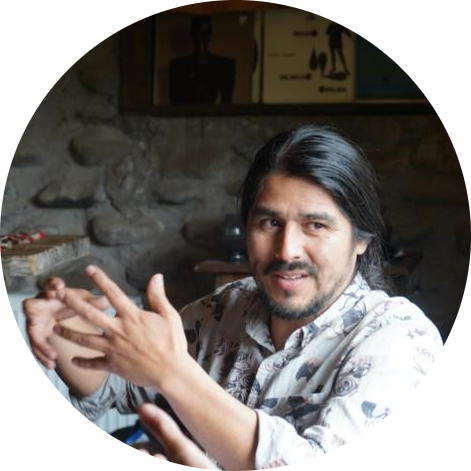Course goals
Sustainable business managers not only need to know how actual digital business models work but also how to redesign digital tools in order to innovate and reach sustainable goals.
In this course, following the principles of the non-human centered design we will analyze concrete tech examples of the use, limits (bias) and rationality behind current digital technologies. The objective is to offer a space of design possible futures rationalities following a speculative scenario development (foresight) of current sustainability challenges.
Bringing students' own work experiences dealing with difficulties and daily problems to design, implement and manage sustainables business, students will design speculatives tech tools and rationalities in order to innovate and facilitate the achievement of sustainable business goals.
This course starts with a critical overview of the reproduction of the linear and extractivist economic model under the argument of innovations that technology and digital transition present. Following this introduction, students bring their own experiences to identify how old patrons continue to be reproducing although the industry claims innovation. Then no-human centered design is introduced as a major critique to the development of technology in the digital era as well as principal tools to design a sustainable speculative rationality to drive technology for sustainable business goals. Following an introduction on the above, this course dives deeper into how we can design a “sustainable non-human centered rationality” in order to drive technology. In this context what kind of new industries we can speculative create following the paths of FinTech, AgriTech, HealthTech, MedTech, InsurTech, EdTech, SpaceTech, and many other xTech industries. What kind of new industries, open new markets and enable opportunities for innovation we can create? How we can apply the convergence of technologies such as Cloud, Big Data, AI, Analytics, Blockchain, Extended Reality, Digital Twins to a “sustainable non-human centered rationality” in order to promote Sustainable Business Model Innovation a.k.a Everything as a Sustainable.
Course results
- To understand how the digital economy continues to reproduce linear economic models arguing innovation.
- To systematize daily sustainable work problems to design sustainable projects.
- To understand and apply the notions of non-human centered design to sustainable business.
- To be able to apply non-human centered design outcome in Impact-Driven Industrial Innovation (xTech).
- To apply speculative methodologies in the design of Technology in Impact-Driven Sustainable Model Innovation: Everything as a Sustainable (XaaS).
- To evaluate the impact of Digital Enablers of I4.0 in adapting Sustainable rationality driven technology.
- To analyze and apply cases and industry examples in explaining the role of strategic technology management for social, economic, and environmental prosperity.
- To be able to integrate Symbiotic Sustainability Models, Industrial Symbiosis, and NGO-Corporate Alliances.
